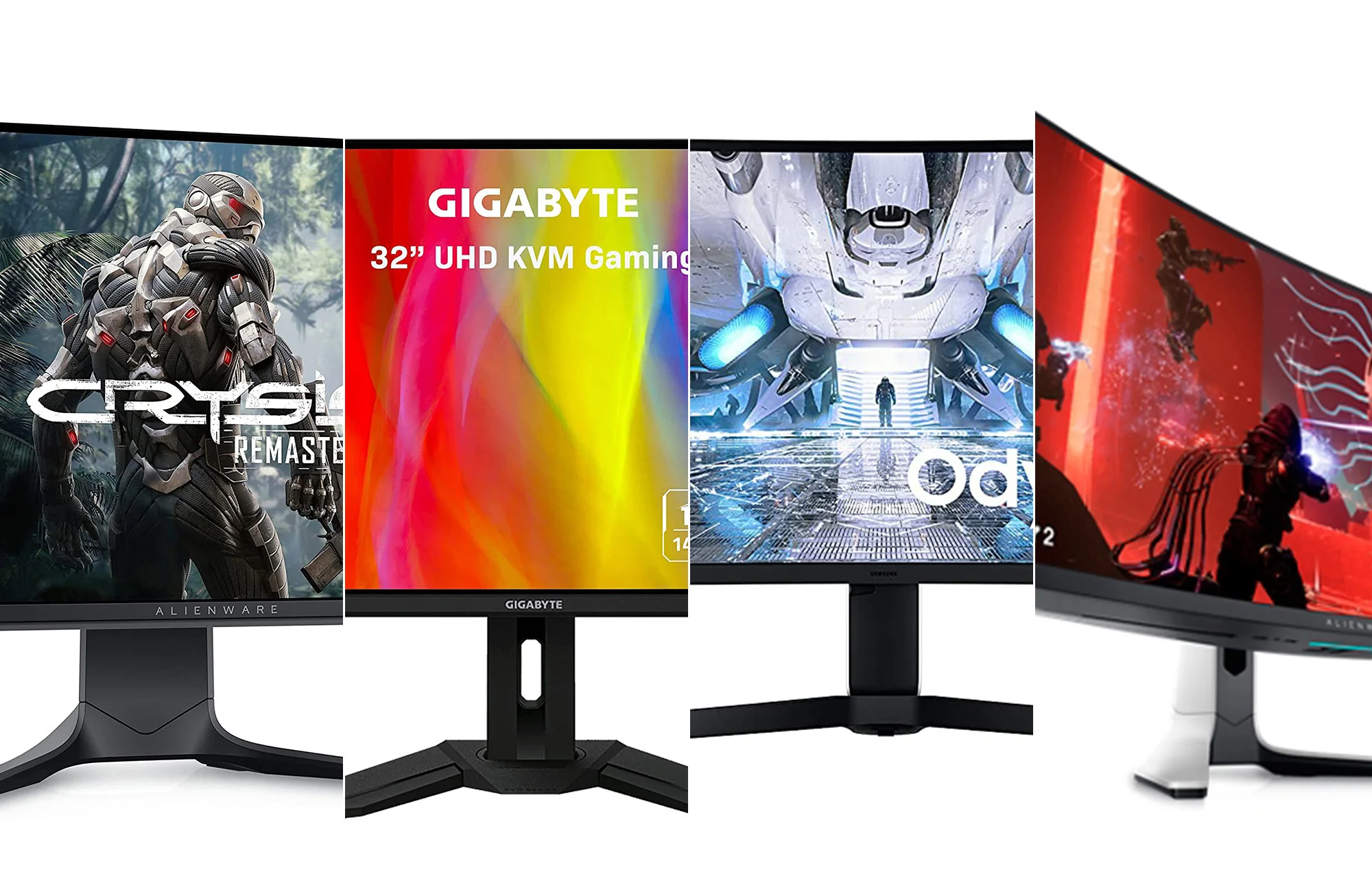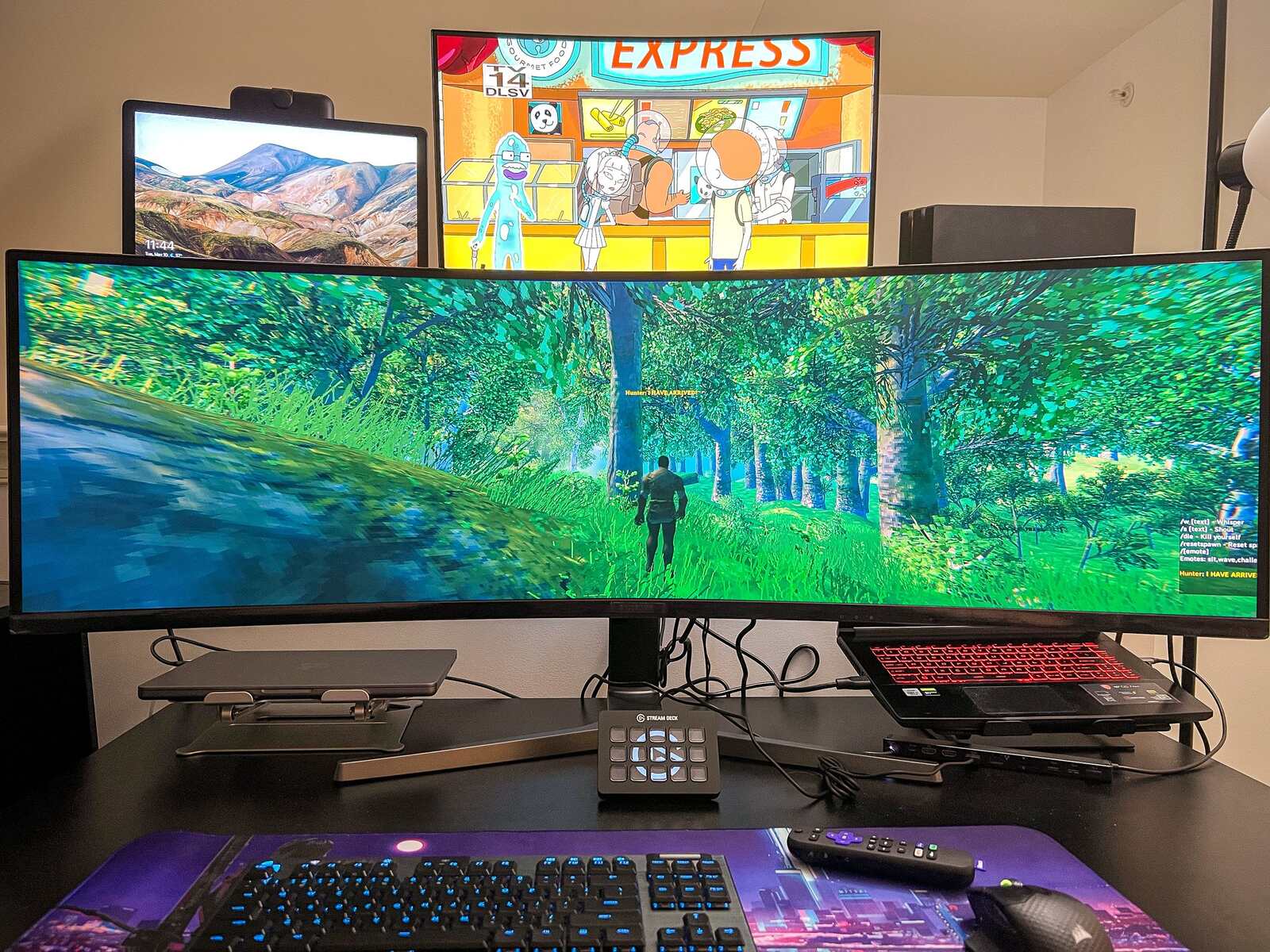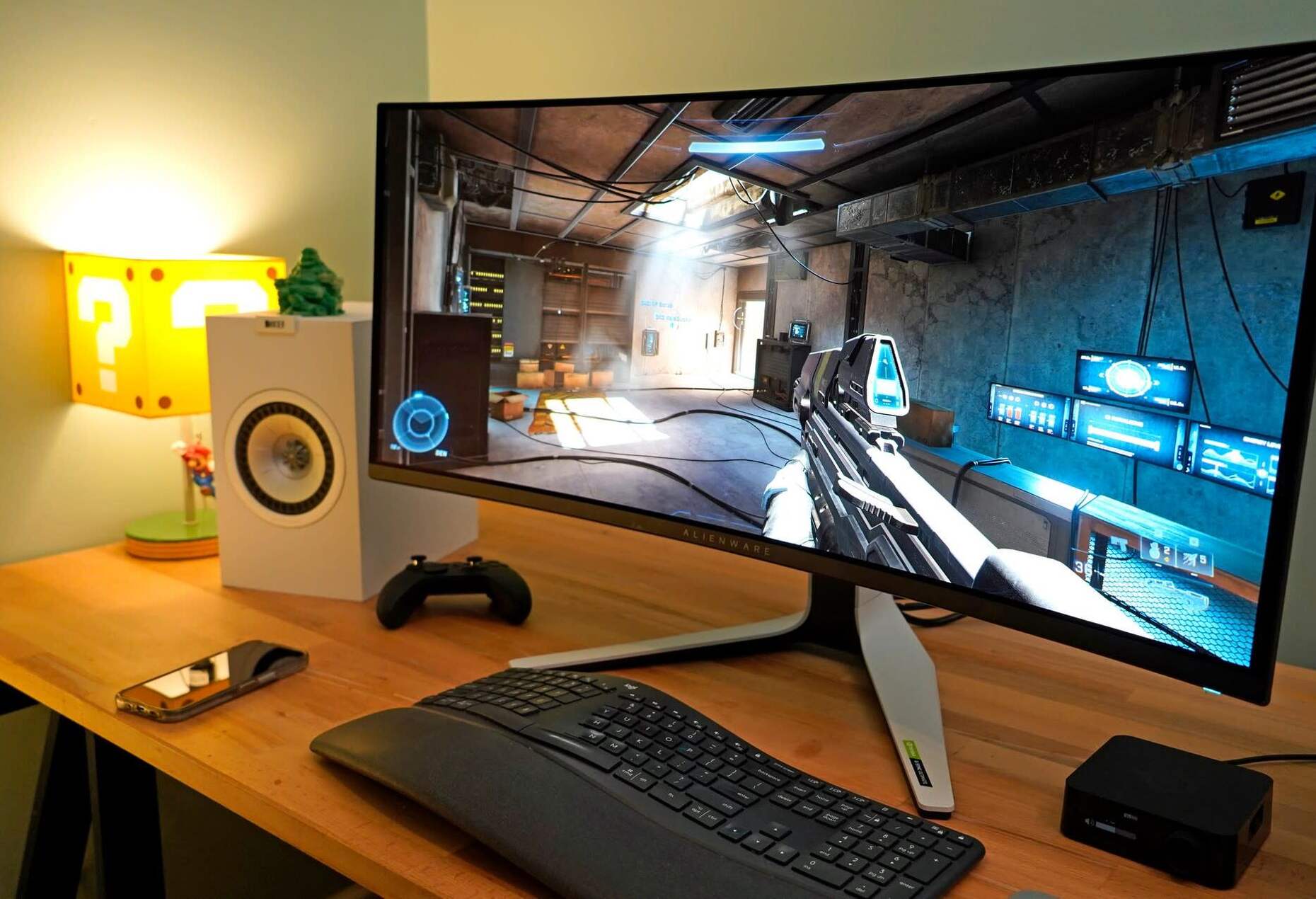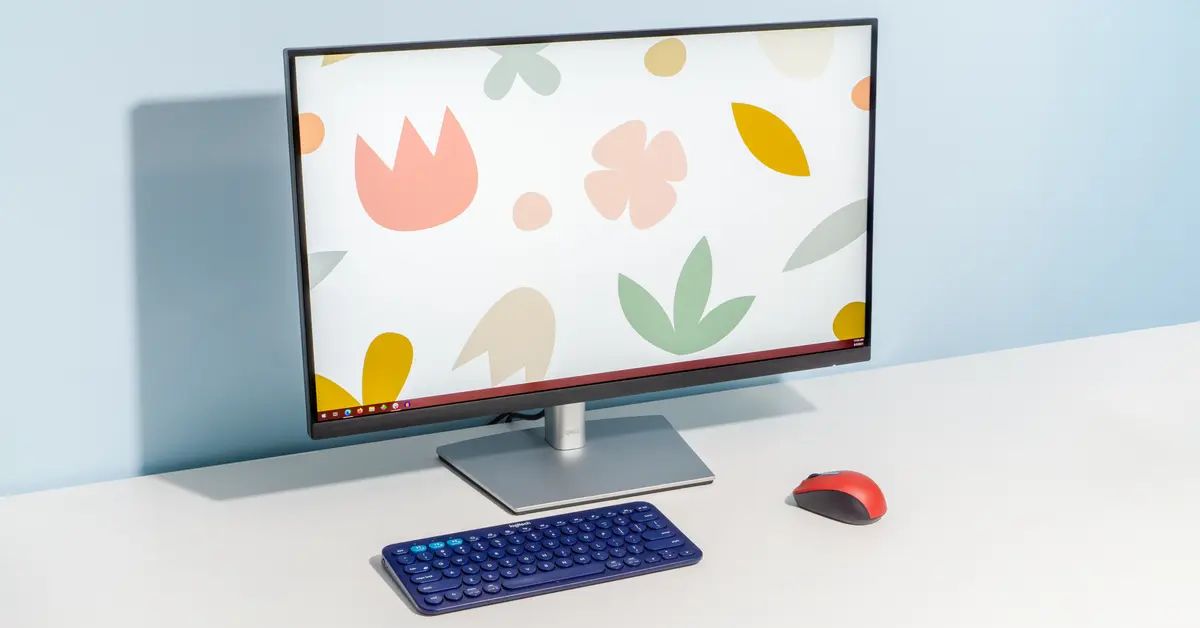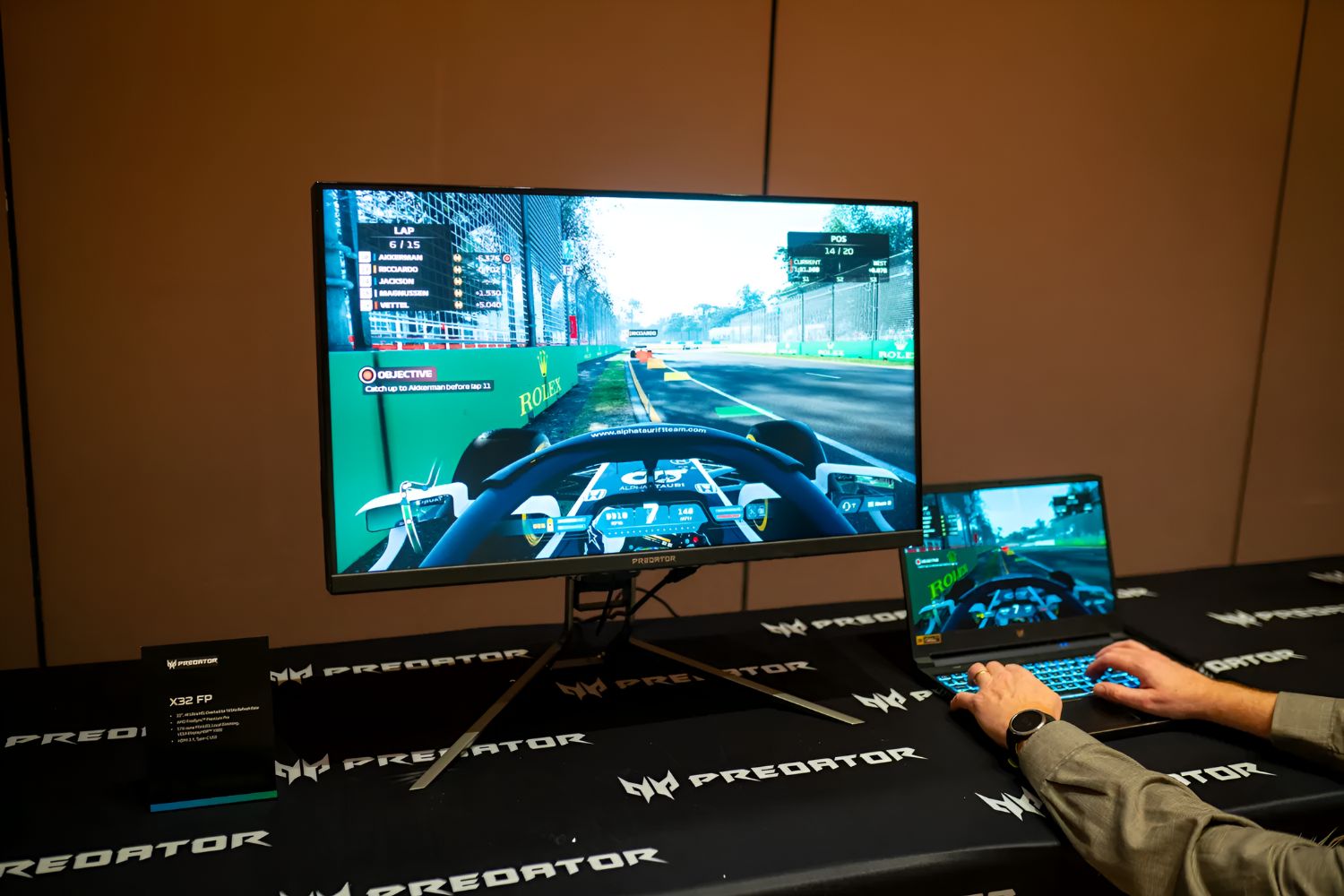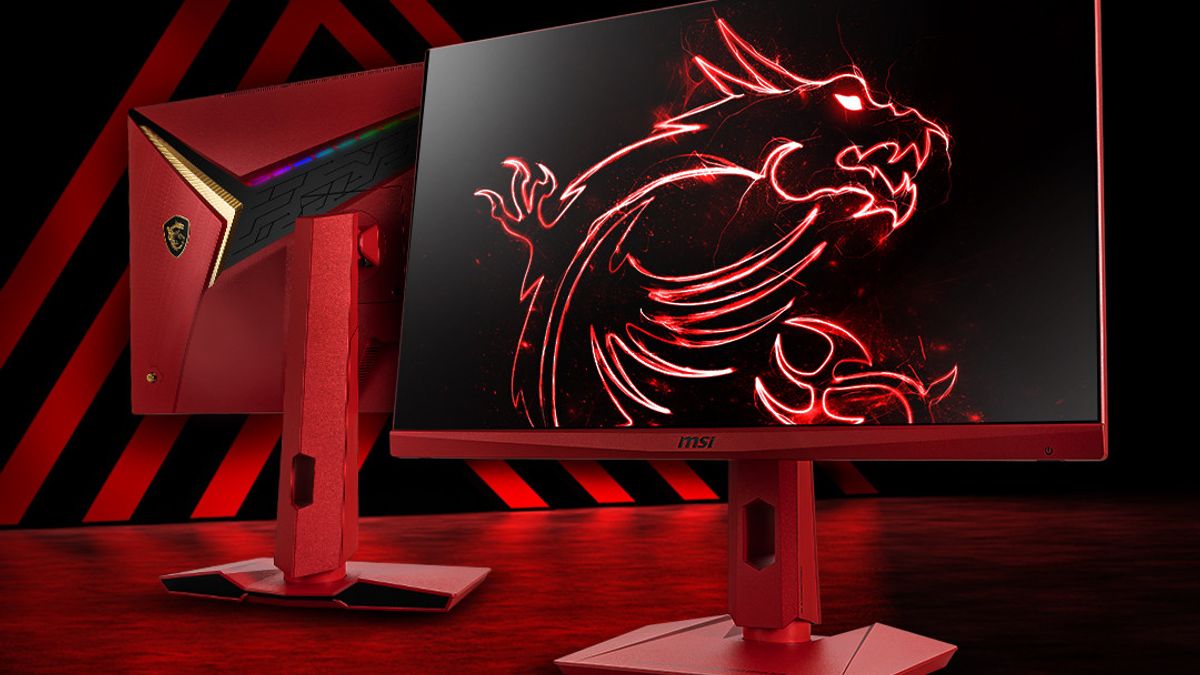Introduction
Gaming has become an increasingly popular form of entertainment, and the demand for a captivating and immersive gaming experience continues to grow. One crucial aspect of creating such an experience is choosing the right monitor size for gaming. The size of your monitor can have a significant impact on your gaming experience, affecting everything from visual clarity to overall immersion.
When it comes to gaming monitors, there is a wide range of sizes available, each with its own advantages and considerations. From larger screens that offer a more expansive viewing area to smaller screens that provide better pixel density, there are various factors to consider when selecting the optimal monitor size for your gaming setup.
In this article, we will explore the benefits of both larger and smaller monitors for gaming, as well as the key factors to consider when choosing the right size for your gaming needs. Whether you’re a casual gamer looking for an immersive experience or a competitive gamer seeking optimal performance, understanding the impact of monitor size on your gameplay is essential.
It’s important to note that while monitor size is an essential factor, it is not the sole determining factor in the overall gaming experience. Other aspects, such as refresh rate, response time, and resolution, also contribute significantly. However, in this article, we will primarily focus on the size aspect and its influence on gaming.
Benefits of a larger monitor for gaming
When it comes to gaming, size does matter. Opting for a larger monitor size can offer several advantages that enhance your gaming experience. Here are some of the benefits of choosing a larger monitor for gaming:
- Immersive gameplay: A larger screen provides a more immersive gaming experience, enveloping you in the virtual world and making you feel more connected to the game. The increased screen real estate allows for a wider field of view, enhancing your peripheral vision and making you feel more present in the game world.
- Enhanced detail and clarity: With a larger monitor, you can enjoy a greater level of detail and clarity in your games. The larger screen size allows for more pixels, resulting in sharper images and more vibrant colors. This is particularly beneficial for visually stunning games with intricate graphics or open-world environments.
- Improved multitasking: Gaming monitors with larger screen sizes provide ample space for multitasking. With more screen real estate, you can easily have additional applications or browser windows open alongside your game, making it convenient to chat with friends, monitor system performance, or even watch videos while gaming.
- Easy readability: Larger monitors offer increased text visibility and readability, making in-game text, menus, and HUD elements easier to read and navigate. This can be especially beneficial for games with extensive dialogue or intricate user interfaces.
- Greater gameplay enjoyment: Playing games on a larger monitor can enhance your overall enjoyment. The larger screen size allows you to fully appreciate the game’s visuals, animations, and special effects. It can also make multiplayer gaming more enjoyable, as you can easily spot and track other players on the screen.
Ultimately, the benefits of a larger monitor for gaming depend on personal preferences and the types of games you play. If you crave a more immersive and visually stunning gaming experience, a larger monitor can help you achieve that.
Benefits of a smaller monitor for gaming
While larger monitors offer their own set of advantages, smaller monitors also have their unique benefits when it comes to gaming. Here are some of the advantages of choosing a smaller monitor for gaming:
- Higher pixel density: Smaller monitors tend to have higher pixel density, meaning the pixels are packed closer together. This results in sharper and more detailed visuals, providing a crisper gaming experience. The higher pixel density also allows for better image quality, as there is less space between pixels, reducing potential blurring or pixelation.
- Shorter response times: Smaller monitors often boast faster response times, ensuring that the transition and display of frames happen in a swift and smooth manner. This can be crucial for fast-paced games that require quick reflexes and precise timing.
- Reduced eye movement: With a smaller monitor, your eyes can cover the entire screen without having to move around as much. This can be advantageous for competitive gaming, as it allows for quick and easy tracking of in-game elements without straining your eyes or losing focus.
- Compact and space-saving: Smaller monitors take up less desk space, making them a practical choice for gamers with limited room or those who prefer a more streamlined gaming setup. Their compact size also makes them more portable, enabling you to easily transport and enjoy gaming on the go.
- Lower cost: Smaller monitors generally come with a more budget-friendly price tag compared to their larger counterparts. If you’re looking for a cost-effective gaming solution without compromising on quality, a smaller monitor can be a viable option.
Choosing a smaller monitor for gaming can be advantageous in specific scenarios, such as when you prioritize portability, have limited space, or are seeking a more affordable option. Small monitors can still provide an enjoyable and high-quality gaming experience, especially if you prioritize pixel density and fast response times.
Considerations when choosing the size of a gaming monitor
When selecting the size of a gaming monitor, it’s important to consider various factors to ensure it meets your gaming needs and preferences. Here are some key considerations to keep in mind:
- Gaming setup and space: Consider the available space in your gaming area and the size of your gaming desk. Measure the distance between you and the monitor to determine the optimal screen size. You don’t want the monitor to be too close or too far, as it can affect your comfort and overall gaming experience.
- Gaming preferences: Think about the types of games you primarily play. If you enjoy immersive open-world RPGs or first-person shooters, a larger monitor can enhance your gaming experience. However, if you mainly play competitive esports titles, a smaller and more responsive monitor may be more suitable.
- Resolution and pixel density: Consider the resolution of the monitor you’re considering. Higher resolutions, such as 1440p or 4K, are best suited for larger monitors to fully appreciate the increased level of detail. Smaller monitors with higher pixel density can offer sharper visuals at lower resolutions.
- Budget: Determine your budget and find a monitor size that falls within your price range. Remember that larger monitors generally come with a higher price tag, so find the right balance between size and cost that suits your budget and gaming requirements.
- Refresh rate and response time: Take into account the refresh rate and response time of the monitor. Higher refresh rates (such as 144Hz or 240Hz) provide smoother gameplay, while lower response times reduce motion blur and input lag. These factors are essential for fast-paced gaming and competitive play.
- Future-proofing: Consider whether you want a monitor with room for future upgrades. If you plan on upgrading your gaming setup or graphics card in the future, a larger monitor may be a better investment to ensure compatibility with higher resolutions and graphics settings.
By considering these factors, you can make an informed decision when choosing the size of your gaming monitor. It’s crucial to find the right balance between personal preferences, gaming requirements, and budget constraints to ensure an optimal gaming experience.
Popular monitor sizes for gaming
When it comes to gaming monitors, there are several popular sizes that have gained popularity among gamers. While individual preferences may vary, the following monitor sizes are commonly preferred for gaming:
- 24-inch: The 24-inch monitor is a popular choice for gamers who value a compact and budget-friendly option. It provides a good balance between size and pixel density, offering a crisp gaming experience without taking up too much space on your desk.
- 27-inch: The 27-inch monitor has become the standard for many gamers, providing a larger screen size without being overwhelming. It offers a more immersive gaming experience, better visual detail, and ample space for multitasking.
- 32-inch: For gamers who desire a larger display, the 32-inch monitor is an excellent choice. It provides a substantial viewing area, delivering an immersive gaming experience with enhanced clarity and visual impact.
- 34-inch ultrawide: Ultrawide monitors with a 34-inch screen size have gained popularity among gamers who appreciate a wider field of view. These monitors offer an immersive gaming experience, simulating a panoramic view and providing an advantage in games that support the ultrawide aspect ratio.
- 49-inch super ultrawide: The 49-inch super ultrawide monitor is a relatively new offering that has captivated gamers looking for an unparalleled immersive experience. With its expansive curved display, it provides an incredibly panoramic view, giving gamers an unrivaled sense of immersion.
It’s important to note that these sizes are just reference points, and there are many other sizes available in the market to cater to different preferences and needs. The optimal monitor size for gaming ultimately depends on factors such as viewing distance, desired level of immersion, budget, and individual gaming preferences.
Before making a purchase, it’s advisable to visit a physical store or read reviews to get a sense of the actual screen size and how it aligns with your expectations. Consider your gaming setup, space availability, and personal preferences to select the monitor size that offers the best balance between immersion, visual quality, and practicality for your gaming needs.
Final Thoughts
Choosing the right monitor size for gaming is a decision that can significantly impact your gaming experience. Whether you opt for a larger or smaller monitor, each size offers its own unique advantages and considerations.
For gamers seeking an immersive experience with enhanced visual clarity and greater detail, a larger monitor can provide a wider field of view and a more engaging gameplay environment. On the other hand, gamers who prioritize pixel density, faster response times, and portability may find that a smaller monitor suits their needs better.
When deciding on the size of your gaming monitor, it’s crucial to consider factors such as your gaming preferences, available space, budget, and future plans for upgrades. Additionally, make sure to examine other important features of the monitor, such as resolution, refresh rate, and response time, to ensure an optimal gaming experience.
Ultimately, the perfect monitor size for gaming is subjective and varies from person to person. What matters most is finding a balance between your preferences and the specific gaming requirements that will enhance your enjoyment and performance.
Take the time to research and explore different monitor sizes, read reviews, and even visit physical stores to get a firsthand experience before making a decision. By carefully considering these factors, you can choose a gaming monitor size that fits your needs and allows you to fully immerse yourself in the exciting world of gaming.







